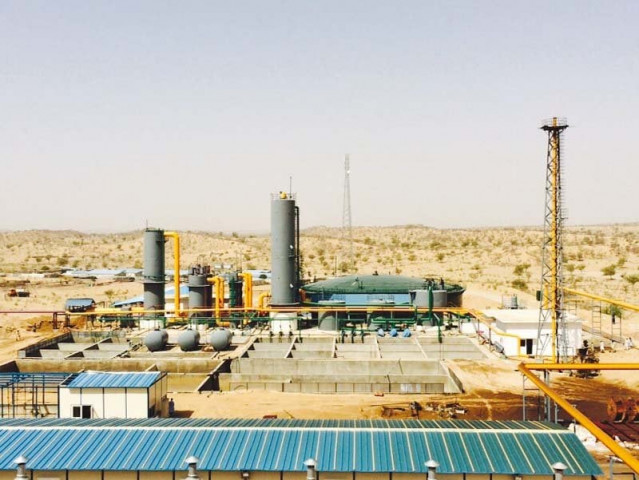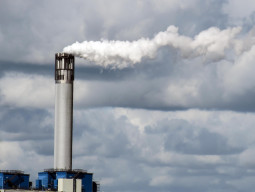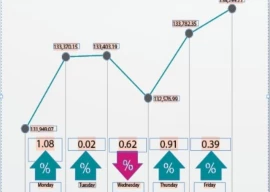
An interim fall in oil prices over the past two years led to a decrease in energy imports from $15 billion in 2013 to $12 billion last year, but they are poised to increase due to the rising trend in oil market.
Power and transport sectors together consume two-thirds of energy requirements. Pakistan imports 38% of its energy requirements. Compared to energy imports, Pakistan’s exports stand at only $21 billion.
Power generation conference: Experts stress exploiting indigenous energy resources
We can safely conclude that the energy import bill amounts to 59% of Pakistan’s total exports. The unintended consequence of increased energy supplies will be energy imports, leading to worsening of the current account deficit. The good news is that the energy crisis is about to end with the import of liquefied natural gas (LNG) and addition of 10,000-megawatt electric power plants.
Four LNG power plants (4x1,100=4,400MW) are under way – some of which have already been commissioned partly, three hydroelectric power plants of 3,000MW and four coal power plants on imported and Thar coal of 5,200MW are at various stages of completion. Some of these have already started producing electricity.
Load-shedding has decreased, although Karachi is still suffering, but it has not been totally eliminated. It would certainly be once all the under-construction plants come into production which would be shortly.
However, there is one worrying issue. Three of the coal power plants of 4,000MW are based on imported coal. Punjab government has been lobbying for several more plants on imported coal.
Four LNG-based power plants of 4,400MW are also import-based. Several more may be added. I have done some back-of-the-envelope exercise. Assuming 100 billion kilowatt-hour (kWh) of electricity coming out of imported coal and LNG and assuming 4 to 5 cents of imported fuel cost, some $4.5 billion of imported LNG and coal would be required for about 10 power plants.
Better planning needed
Already around 5 million tons of coal is being imported for industrial use mainly for cement and other industries. While imported coal-based plants were necessary for fast-track induction of electric power and because there were some uncertainties in the development of Thar coal, some better planning could have been done.
Pulverised coal power technology has been chosen which cannot utilise Thar coal, except for a possible input of 10% to 20%. An alternative technology (CFBC - boilers) could have been adopted which allows a wide variety of fuel including 100% of Thar coal.
For simplicity, let us call it Flexible Fuel Technology (FFT). CFBC (FFT) technology has come of age in recent years and is available in required capacities with comparable thermal efficiency. China has made some stride in this area as well.
In the initial years, imported coal could be utilised under this technology and in later years plants could be shifted to Thar coal. Conspiracy theorists assert more money will be earned in coal imports than is possibly made in selling power plants.
A coal power plant imports 10 times more coal in value terms ($15 billion) than the capital expenditure of a power plant.
Perhaps immediate application of this CFBC (FFT) proposal could be in the 300MW coal power plant being installed in Gwadar. Unfortunately, it is being based on imported coal as well.
The coal requirement for this small power plant is not very high. Coal should be procured from coalmines in Balochistan and Thar. Initially, some imported coal may be allowed, if there happens to be some difficulties. Also dry cooling should have been adopted due to water scarcity in Gwadar.
The choice of technology should receive more attention. In addition to the issue of CFBC boilers, yesterday’s technology of shovel and trucks has been used in Thar coal, which will alone consume $280 million of diesel.
These days large machines like Bucket Wheel Excavators (BWE) and conveyors are used which are more efficient and dig the mines out in one year than several years that have been consumed in Thar. Coal is still not visible after more than two years of digging.
Can something still be done, probably yes. Firstly, there should be a ban on imported coal power plants and all future coal power plants should be based on Thar coal; secondly, all future coal power plants should adopt CFBC (FFT) technology; thirdly, some investment should be made to convert Thar lignite coal into pulverised coal.
Technology is now available to convert lignite into pulverised coal through drying, crushing and pulverisation. Facilities can be installed either at the mine or at the power plant. The same can also be used in cement plants displacing imported coal therein also.
Vast reserves
As everybody knows, Thar lignite coal reserves are very vast estimated at 185 billion tonnes. One plant of 1,000MW requires about 150 million tonnes over a lifetime of 30 years. One can imagine how much electricity can be produced for a century or more.
However, all of the Thar coal capacity may not be installed in Thar only for a variety of reasons. Some researchers have put an upper limit of 10,000MW, possibly due to water scarcity. However, dry cooling technologies have been developed which may address this limitation.
Power plants are also installed at load centres as well for a variety of reasons. Thus, Thar coal will have to be transported to other parts of the country. Logistics should be developed to transport the coal, whether in its original form or in the form of pulverised lignite.
At present, logistics is there to transport imported coal. Fortunately, Thar Express track passes through Thar and a connection track can be laid. This would allow the transportation of Thar coal through rail link to all parts of the country.
One would like to advise against the current policy of awarding mining licences for Thar coal without first reaching the optimum level of production in the current mine. Adding more mines would increase the cost of coal and thus of electricity and would also be a drain on foreign exchange.
Environmentalists may not like the proposed approach to energy security and increased use of Thar coal on the grounds of pollution and climate change issues and may argue that renewable energy like solar and wind power should be preferred which is costing only 50-60% of the fossil energy.
However, it should be noted that the sun shines in the day only and wind blows seasonally. Storage would be required which is too expensive currently. Renewable energy piggybacks on fossil-based power plants.
Thus, at the present level of technology, one cannot visualise an energy mix without fossil fuel and in our case local Thar coal and gas.
We are a poor country and cannot do without utilising indigenous sources of energy. Nonetheless, one could foresee installation of about 10,000MW of renewables in the next 10 years which may satisfy the environmentalists.
Us-Pak Cooperation: Expo showcases energy solutions
On the natural gas side also, there is no need for pessimism. Pakistan has large untapped gas resources of 150 trillion cubic feet – three times the original gas reserves which we are about to finish in less than a decade – which are waiting to be developed.
If attention is paid, Pakistan can become self-sufficient in gas, at least to the extent of usage for power sector. Innovative policies are required and competition needs to be created. Investment and production tax credits could be introduced to attract local investors.
In my view, it is easier to displace $5 billion of energy imports than to increase exports by the same amount. If the current government has handled the secondary energy issue, the next one should focus on primary energy and energy security.
The writer is former member energy of the Planning Commission
Published in The Express Tribune, May 14th, 2018.
Like Business on Facebook, follow @TribuneBiz on Twitter to stay informed and join in the conversation.


















COMMENTS
Comments are moderated and generally will be posted if they are on-topic and not abusive.
For more information, please see our Comments FAQ